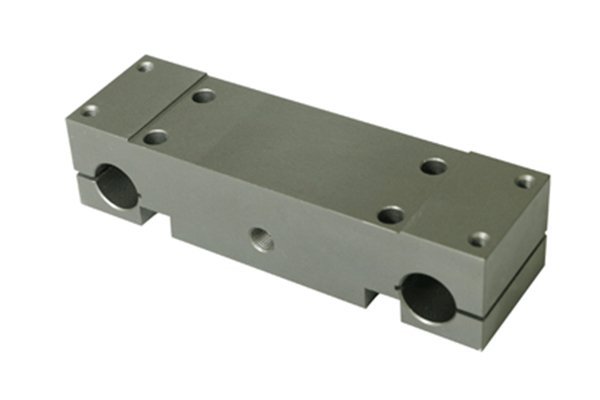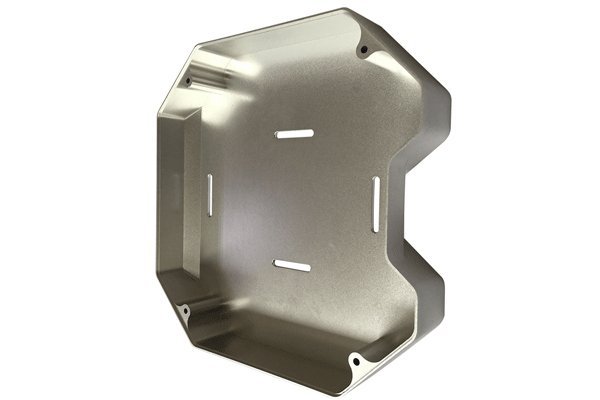In an era where precision and efficiency dictate market success, the production methods adopted by manufacturers can make or break a company. Did you know that CNC machining can improve the overall quality of manufactured parts by as much as 50% compared to traditional manufacturing techniques? This statistic highlights the profound impact CNC (Computer Numerical Control) machining has on industries that require precision and reliability, particularly in aluminum and stainless steel fabrication.
In this comprehensive blog, we will delve into the advantages of CNC machining for stainless steel and aluminum parts. We will explore this topic thoroughly, examining its key benefits, applications, and the reasons why manufacturers are increasingly turning to CNC machining as their go-to method for part production. Whether you’re a business owner considering transitioning your manufacturing processes or simply curious about CNC machining, this guide will equip you with the insights you need.
Before diving into the advantages, it is essential to understand what CNC machining entails. CNC machining is a manufacturing process that uses programmed computer software to control machine tools. These tools can include lathes, mills, routers, and grinders, which allow manufacturers to create complex parts with precision.
The process begins with a digital design created using computer-aided design (CAD) software. This design is then converted into a language that machines can interpret—known as G-code. The CNC machine interprets this code to execute specific cutting, drilling, and milling operations, producing parts that meet exact tolerances and specifications.
Stainless steel is an alloy of iron, carbon, and at least 10.5% chromium, which imparts corrosion resistance. Additionally, it possesses high tensile strength, making it ideal for applications requiring durability and high performance.
Aluminum, on the other hand, is a lightweight metal known for its malleability, ductility, and excellent resistance to corrosion. These properties make aluminum an attractive option for industries ranging from automotive to aerospace.
Why Choose Stainless Steel and Aluminum for CNC Machining?
Both materials offer unique benefits when machined with CNC technology. Stainless steel parts provide robustness and longevity, perfect for high-stress environments. Aluminum parts, while lighter, deliver excellent thermal conductivity and surface finish. Thus, utilizing both materials in CNC machining allows manufacturers to achieve a balance of strength and weight, enhancing product performance.
Precision and Accuracy
One of the standout features of CNC machining is its ability to achieve remarkable precision. Tolerances as tight as ±0.001 inches can be routinely reached, making it the ideal choice for manufacturing components that must fit perfectly with other parts. This high level of accuracy minimizes waste and rework, making production more efficient.
Efficiency in Production
CNC machines operate autonomously based on the programmed instructions. Once set up, they can run for extended periods without human intervention, resulting in significantly increased output rates. This efficiency allows manufacturers to meet deadlines and scale production volumes seamlessly.
Versatility of Designs

CNC machining allows for operating numerous tasks, transforming complex designs into tangible products. From intricate patterns to simple geometric shapes, CNC machinery can handle a variety of designs with ease. The capability to machined both 2D and 3D forms means that manufacturers can explore innovative designs that stand out in the market.
Improved Surface Finish
CNC machining can achieve superior surface finishes, often exceeding the standards set by traditional manufacturing methods. This finish not only enhances the aesthetic appeal of parts but also improves functionality. For example, smoother surfaces are easier to clean, reducing the risk of product contamination in industries like food and pharmaceuticals.
Cost-Effectiveness
While the initial setup cost for CNC machining might be higher than conventional methods, the long-term savings are significant. Due to reduced waste, minimized labor costs, and shorter production times, the overall cost of creating parts is often much lower, making CNC machining an economically viable option.
Milling
CNC milling is a common process for shaping and cutting both aluminum and stainless steel. The use of rotating cutting tools allows for removing material at precise angles and depths, creating complex geometries and features such as pockets, slots, and contours.
Turning
CNC turning is particularly useful for producing cylindrical parts. The workpiece rotates while a cutting tool moves along its length, allowing for the formation of round shapes like shafts and tubes. This process is especially beneficial for aluminum, as it can achieve high speeds without sacrificing quality.
Drilling
CNC drilling automates the drilling process, ensuring that holes are placed accurately and consistently. This process is essential in creating components that require multiple holes, such as brackets, plates, and custom fittings.
Electrical Discharge Machining (EDM)
EDM is a technique used to create intricate shapes and features without affecting the material properties. It is particularly effective for hard materials like stainless steel, allowing for the production of complex geometries typically unsuitable for traditional machining.
Software and Programming
CNC machining relies heavily on advanced software solutions for design and programming. CAD and Computer-Aided Manufacturing (CAM) software work in tandem to create accurate part designs and generate the corresponding G-code. This automation minimizes human error, further enhancing precision.
Automation
Automation is another key aspect of modern CNC machining. Advanced technologies like robotics and AI can optimize processes and operational efficiency. Whether it’s automating loading and unloading processes or implementing predictive maintenance, automation in CNC machining contributes significantly to overall productivity.
CNC machining for stainless steel and aluminum is applicable across various industries, including:
The implementation of CNC machining can contribute to sustainable manufacturing processes. By reducing material waste and increasing energy efficiency during production, manufacturers can operate in a more environmentally responsible manner. Additionally, waste generated during machining can often be recycled, making it a greener option for part production.
When selecting a CNC machining service provider, consider factors such as:
By carefully assessing these factors, you can make an informed choice that aligns with your production needs.
CNC machining offers unparalleled advantages for manufacturers producing stainless steel and aluminum parts. Its precision, efficiency, versatility, improved surface finish, and cost-effectiveness make it a preferred choice across various industries. By understanding the technology and processes involved, businesses can harness the benefits of CNC machining to enhance their manufacturing capabilities.
In summary, this blog underlines the importance of embracing CNC machining as a vital solution for producing high-quality components. Whether you’re a manufacturer seeking to modernize your operations or an industry professional aiming to optimize production methods, the insights provided here should serve as a strong foundation for making informed decisions. The world of CNC machining is constantly evolving, and staying abreast of advancements will not only keep your business competitive but will also be immensely beneficial in meeting the increasingly stringent demands of the market today.



